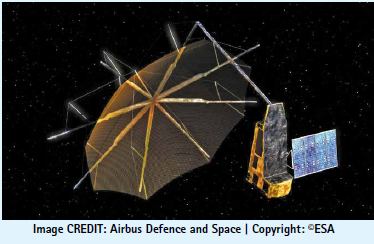| News Archives | |
PNT Update
UK Positioning, Navigation and Timing: Overview
As of March 2025, the UK’s Framework for Greater PNT Resilience, introduced in October 2023, continues to drive efforts to enhance Positioning, Navigation, and Timing (PNT) services. A significant milestone was achieved on 20 November 2024, when the National PNT Office, established within the Department for Science, Innovation and Technology (DSIT), collaborated with the Royal Institute of Navigation (RIN) to launch the world’s first best practice principles and checklist for resilient PNT. This initiative provides businesses with actionable guidance to mitigate risks and invest in robust PNT technologies, marking a global lead in standardizing resilience measures. Additionally, the 2025 National Risk Register, part of the National Security Risk Assessment (NSRA), reaffirmed the critical risk of PNT disruptions due to potential catastrophic Global Navigation Satellite System (GNSS) failures, underscoring the urgency of ongoing resilience efforts.
Introduction
PNT services are vital to the UK’s economy, security, and daily operations, supporting sectors such as finance, defence, transportation, telecommunications, and emergency services. PNT encompasses Positioning (determining location and orientation), Navigation (guiding movement between positions), and Timing (maintaining precise time from a global standard). Primarily delivered through GNSS, such as the US Global Positioning System (GPS), PNT is an “invisible utility” enabling communications, global supply chains, and activities like banking and broadcasting. The UK’s reliance on GNSS, however, exposes it to disruptions, prompting the government to prioritize enhanced PNT resilience.
Why PNT Matters
PNT underpins all 13 sectors of the UK’s Critical National Infrastructure (CNI), including energy, transport, and emergency services. It enables secure financial transactions, media broadcasts, and emerging technologies like autonomous vehicles and smart cities. The 2018 Blackett Review, Satellite derived Time and Position: A Study of Critical Dependencies, highlighted the risks of GNSS dependency, noting that disruptions from technical failures, space weather, or intentional interference could severely impact the economy and national security. The 2025 National Risk Register further emphasizes the need for robust contingency measures to address these vulnerabilities.
Government Framework for Greater PNT Resilience
The Framework for Greater PNT Resilience, a 10-point policy plan launched in October 2023, aims to reduce dependency on vulnerable GNSS signals, enhance resilience, and foster innovation. Building on the 2018 Blackett Review, the 2021 Integrated Review, and the UK Space Agency’s Space Based PNT Programme (SBPP), the framework remains a cornerstone of UK PNT policy. Its key components include:
1. National PNT Office
The National PNT Office, housed in DSIT, coordinates PNT policy and delivery across government. Launched post-2023 framework, it drives resilience by collaborating with stakeholders to address vulnerabilities and promote innovative solutions, as evidenced by the 2024 RIN collaboration.
2. PNT Crisis Plan
A cross-government PNT Crisis Plan is maintained to mitigate GNSS disruptions, identifying short-term solutions to ensure continuity of critical services, as informed by the 2023 RIN White Paper and 2025 National Risk Register.
3. National Timing Centre (NTC)
A proposed National Timing Centre, based on the National Physical Laboratory’s UTC(NPL) time scale, would provide resilient, terrestrial, and sovereign timing using advanced optical clocks. Supported by £14 million, this builds on the NTC R&D programme since 2020.
4. Ministry of Defence (MOD) Time
A proposed “MOD Time” system would ensure resilient timing for defence applications, leveraging NTC capabilities to enhance national security in contested environments.
5. Enhanced Long-Range Navigation (eLORAN)
A terrestrial, sovereign eLORAN system is proposed to provide backup positioning and navigation. In May 2023, Ofcom sought industry interest in eLORAN broadcast licenses, advancing implementation.
6. UK Satellite-Based Augmentation System (SBAS)
A UK Precise Point Positioning SBAS is under exploration to replace reliance on the European Geostationary Navigation Overlay Service (EGNOS), supporting high-accuracy positioning and GNSS integrity monitoring
7. Next-Generation PNT Technologies
Investments in quantum navigators and potential UK sovereign regional satellite systems aim to diversify PNT sources and bolster resilience against emerging threats.
8. Infrastructure Resilience
The framework promotes resilient GNSS receiver chips, holdover clocks, and potential legislation to mandate minimum PNT resilience standards for CNI sectors.
Economic and Strategic Impact
The framework addresses vulnerabilities while positioning the UK as a PNT innovation leader. By fostering skills, industry collaboration, and R&D, it supports economic growth and aligns with the 2023 UK Science and Technology Framework’s vision of a science and technology superpower by 2030. Resilient PNT systems are critical for autonomous vehicles, digital twins, and 5G networks, ensuring global competitiveness.
Conclusion
The UK’s Framework for Greater PNT Resilience strengthens critical infrastructure and drives economic opportunities. Recent advancements, including the National PNT Office’s 2024 best practice principles and ongoing NTC and eLORAN proposals, demonstrate progress toward a secure PNT ecosystem. For further details, visit www.GOV.UK.













 (No Ratings Yet)
(No Ratings Yet)






Leave your response!